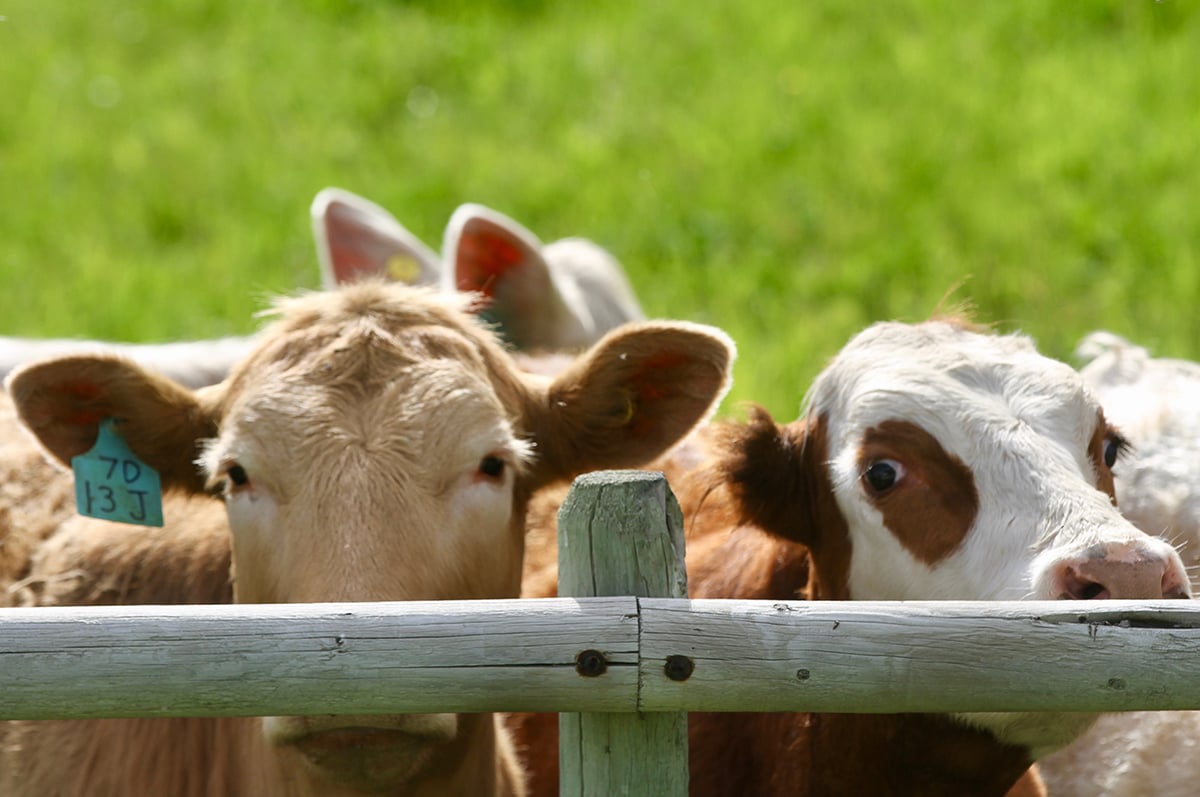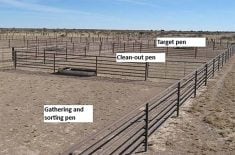When Larry Helland realized just over a third of his money was deducted from his grain cheque to pay for freight, it reaffirmed his family’s decision to be more self sufficient on the farm.
The Lomond, Alta.-area rancher embarked on a plan four years ago to keep calves at home, feed them farm grown rations and sell them as a finished product at 14 months.
This concept of retained ownership from womb to tomb takes planning, but it’s more profitable than selling calves in the fall and accepting whatever price is offered in the fall feeder calf runs.
Read Also

Feeder market consolidates at historic highs
For the week ending Sept. 6, Western Canadian feeder cattle markets were relatively unchanged compared to seven days earlier.
“We’ve eliminated the trading processes in the chain and we’ve retained that profit. Every time you move your cattle there’s a cost involved in trucking, commissions. We’re able to capture that,” he said.
Marketing their own product puts an additional $20 a head in their pockets, Helland said.
Averages out
Since beef prices are cyclical, Helland believes they can make more money on the long term even when cattle are worth less.
“The long-term average on retained ownership from the cow-calf to the finished is going to work 10 out of 14 years,” he said.
“This last year it’s like hitting the jackpot at Reno,” he said.
The Helland family tried retained ownership sporadically in the past by placing calves in a custom lot.
They decided to build a feedlot at home that not only makes them money, but provides jobs for family members who wanted to stay on the farm. Two adult sons work on the farm along with some hired help.
They keep about 1,200 head in their feedlot filled with their own calves, as well as a few custom feeders.
The cheapest input was planning, said Helland.
To build the feedlot they had to go through the environmental permitting process with the county of Vulcan in southwest Alberta.
They also needed enough land to grow their own feed and spread their manure.
Pat Ramsey, beef specialist at Alberta Agriculture in High River, said more people should try this approach, but agrees it takes good planning.
In years when calf prices are on the higher end, producers tend to sell them in the fall run and are done with them, said Ramsey.
Bob Lowe, a partner in Bear Trap Feeders at Nanton, Alta., backgrounds calves for people before shipping the animals to larger lots where they are finished to slaughter weight.
Lowe said with this method producers can make more money in most years. The exception occurred when the markets took a downward spiral.
“It cost them money to hold them two years ago when the market went down so fast,” said Lowe.
Ramsay agreed, saying in some years better prices can be had by selling before the main feeder runs start in mid-fall. In addition, early weaning by Thanksgiving is easier on a cow. Taking the calf off sooner allows her to gain some fat to carry her comfortably over winter.
But if a producer wants to try retained ownership, Ramsay suggests using a computer program called Cow Chips. He plugs in some numbers to identify the break-even point on finished calves.
If he puts in a weight of 675 pounds, he calculates the ration requirements for that animal.
Different rates of daily gain are punched into the program and the rations are calculated. The program also contains a marketing module to provide a break-even analysis. This includes the price of the calf coming into the backgrounding period, as well as costs for feed, processing, death, vet bills, interest and incidentals like freight. The program spits out the cost of gain and ultimately the break-even sale price.
Money is the motivation
“This gives guys a better handle on whether it is worth their while or not,” said Ramsey.
“If they figure the price is going to be better than the break-even sale price, then they can figure on a return and it may be worth while. If they are losing money, there is not much point,” he said.
Break-even sale price this time round is higher because the purchase price of calves went up since last year.
Ramsey would like to start a marketing club where participants retain five top steers and put them in a pen with others, feed them out and see how they grade and sell.
“I’d think they’d learn a bit about marketing and how feedlots work, rather than shipping them at weaning,” said Ramsey.















